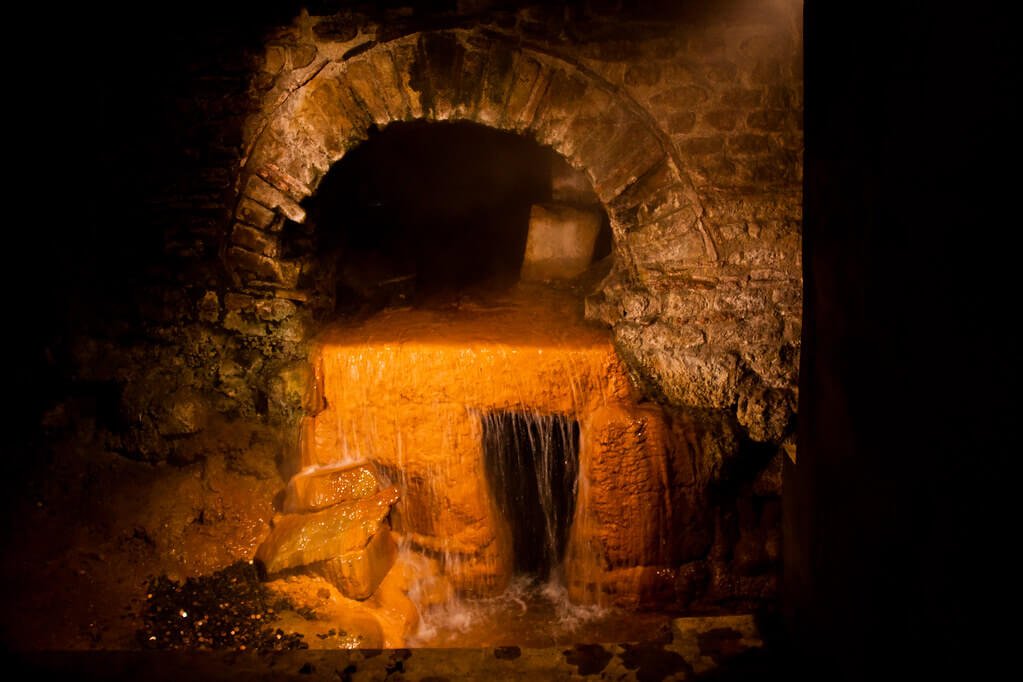BY THE ARCHAEOLOGIST EDITOR GROUP
Approximately 80% of the total length of Rome's aqueducts ran underground. Long after the prospect of invasion made underground structures necessary, they were still preferred. This was due to several advantages they had over surface structures.
The magnificent Colosseum, majestic arches, and vast roadways frequently spring to mind when thinking about the technical achievements of the Roman Empire. Yet, an elaborate network of above- and below-ground aqueducts connected these monumental emblems and ensured the development and vitality of towns from Rome to the far-off provinces. These aqueducts were not merely works of art; they were also the lifeblood that kept the massive Roman Empire alive.
Origins of the Underground Aqueducts
The Romans were unparalleled urban planners and architects, recognizing early on the importance of a reliable and clean water supply for a sprawling city. While the first aqueducts, like the Aqua Appia built in 312 BC, were primarily underground, it's the monumental above-ground arches that usually capture our imagination. But as the city grew and the demand for water increased, a vast underground network was developed to meet the needs of Rome's populace.
Engineering Prowess and Precision
Building an aqueduct wasn't a simple task. It demanded impeccable planning, an understanding of the terrain, and precision in execution. The Romans employed the force of gravity, ensuring that aqueducts, whether running on majestic arches above valleys or channeled deep underground, maintained a gentle gradient to ensure the water's continuous flow.
To protect the water's purity and the structures themselves, aqueducts were often lined with a special water-resistant mortar known as "opus signinum." This foresight ensured the water's purity and the structures longevity, which few other ancient constructions could match.
Samuel Bailey / Wikipedia
The Significance and Purpose
The rationale behind the underground design wasn't purely functional; it was also strategic. By placing aqueducts underground, they were less vulnerable to enemy attacks and natural disasters. Moreover, underground channels minimized water loss from evaporation, ensuring a more reliable supply, especially during the scorching Roman summers.
This hidden network wasn't just about water supply. It was about the equitable distribution of water throughout the city. From the grand public baths and fountains to individual households of both the elite and the commoner, the underground aqueducts democratized access to one of the most vital resources.
Beyond Rome: Spanning an Empire
While the city of Rome boasted impressive aqueducts like the Aqua Claudia and Aqua Marcia, the aqueduct system was not confined to the capital. Major cities throughout the empire, from Segovia in Spain to Ephesus in modern-day Turkey, benefited from this Roman ingenuity. In these regions, aqueducts not only supplied water but also symbolized the empire's might and the benefits of Roman governance.
Social and Cultural Impacts
More than functional utilities, the aqueducts represented Roman societal values and priorities. They provided water for public baths, a hub of Roman social and cultural life, and large latrines that enhanced sanitation. The consistent flow of water facilitated urban living, ensuring cities remained vibrant centers of commerce, governance, and entertainment.
Furthermore, the public fountains, fed by these aqueducts, became symbols of generosity for benefactors and emperors. By ensuring equitable access to clean water, the Roman state reinforced its commitment to the welfare of its citizens.
Legacy and Continuation
Much of the Roman aqueduct system fell into disrepair with the empire's decline. However, their remnants stand as a testament to Roman engineering and the empire's expansive reach. Some sections, like the Aqua Virgo in Rome, still function today, serving both as historical landmarks and functional water sources.
Rediscovery and Recognition
While the remnants of above-ground aqueducts are visible reminders of Roman ingenuity, the subterranean aqueducts remained largely hidden and forgotten until modern times. Recent urban projects and archaeological excavations have brought parts of this intricate system to light, reminding us of the feats of Roman engineering.
Some sections of the underground aqueducts, like those of Aqua Virgo, remain functional today, feeding iconic fountains like the Trevi Fountain. This continuity of use over millennia is a testament to their robust and sophisticated design.
Roman aqueducts, which span continents and centuries, are enduring representations of the empire's size and forward-thinking approach to urban design. We are reminded of a civilization that, at its pinnacle, combined form and function to create a world in which cities could not only exist but also thrive as we stroll beneath the shadow of aqueduct arches or gaze in awe at the fountains they fed.










